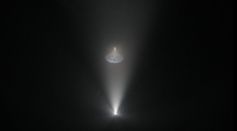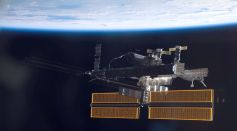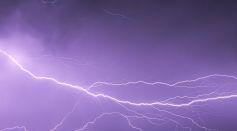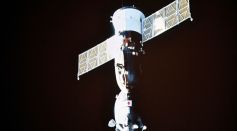Tags: NASA

Scary NASA Photo Shows How Astronauts Do Intense Training for Dark Moon Missions [LOOK]

Life on Mars Conspiracy Theory Claims Spotting A Figure Posing Like Kate Winslet in ‘Titanic’

Toyota Wants To Make a Lunar Cruiser For Moon With JAXA’s Help

NASA Mars Ingenuity Helicopter Glows in the Dark Due to Dust in the Wind

NASA James Webb Space Telescope Finally Finds Photons as Primary, Segmented Mirror Starts Aligning

NASA, SpaceX Don’t See Major Concern Over Dragon Capsule Parachute Amid Lagging Issues

NASA Plans to Burn the International Space Station in 2030

NASA Shares Breathtaking Cosmic Phenomena Resulting From Interaction Of Merging Galaxies, Star And Guitar Nebula [See Photos]

NASA Starts 3-Month Alignment Phase Of James Webb Space Telescope

James Webb Space Telescope Mission: Find 'Super Earth' Exoplanets, Hot Rocky Planets That May Host Life

NASA Artemis 1 Moon Mission’s SLS Megarocket Final Prelaunch Test Delayed Until March

NASA Mars Perseverance Rover Gets a Shocking Rock Sample After Clogging Issues

What’s Your Birthday Astronomy Image? Here’s What NASA’s Hubble Space Telescope Captured On Your Special Day

NASA Plans To Deorbit International Space Station 10 Years From Now; Will It Crash Into Sea?

NASA Hubble Space Telescope Captures Weird Starball 117 Million Light Years Away

NASA ATLAS Upgrade: Is It Now Capable of Full Sky Search Vs. Asteroids?

1, 700 Feet 3D-Printed Habitat Will Be Assembled Soon For A Year-Long Mars-Living Simulation Testing

Evidence of Life on Mars Remains Mysterious Until Martian Rock Sample From NASA Curiosity Rover Will Be Analyzed

Ex-NASA Manager and Axiom Space CEO Michael Suffredini Eyes Making $3 Billion Space Station

What If a Big Asteroid Hits Earth? Scientists Explain the Extent of Danger
Most Popular

Starlink Satellite Explodes in Orbit; SpaceX Confirms It'll Re-Enter Earth

Aurora Phenomenon: How Geomagnetic Storms and Space Weather Are Lighting Up the World

Ocean Warming Explained: Why Climate Science Shows Sea Temperature Rise Is Speeding Up

How Wildfires Start, Spread, and Ignite: Understanding the Causes and Fire Behavior Clearly




